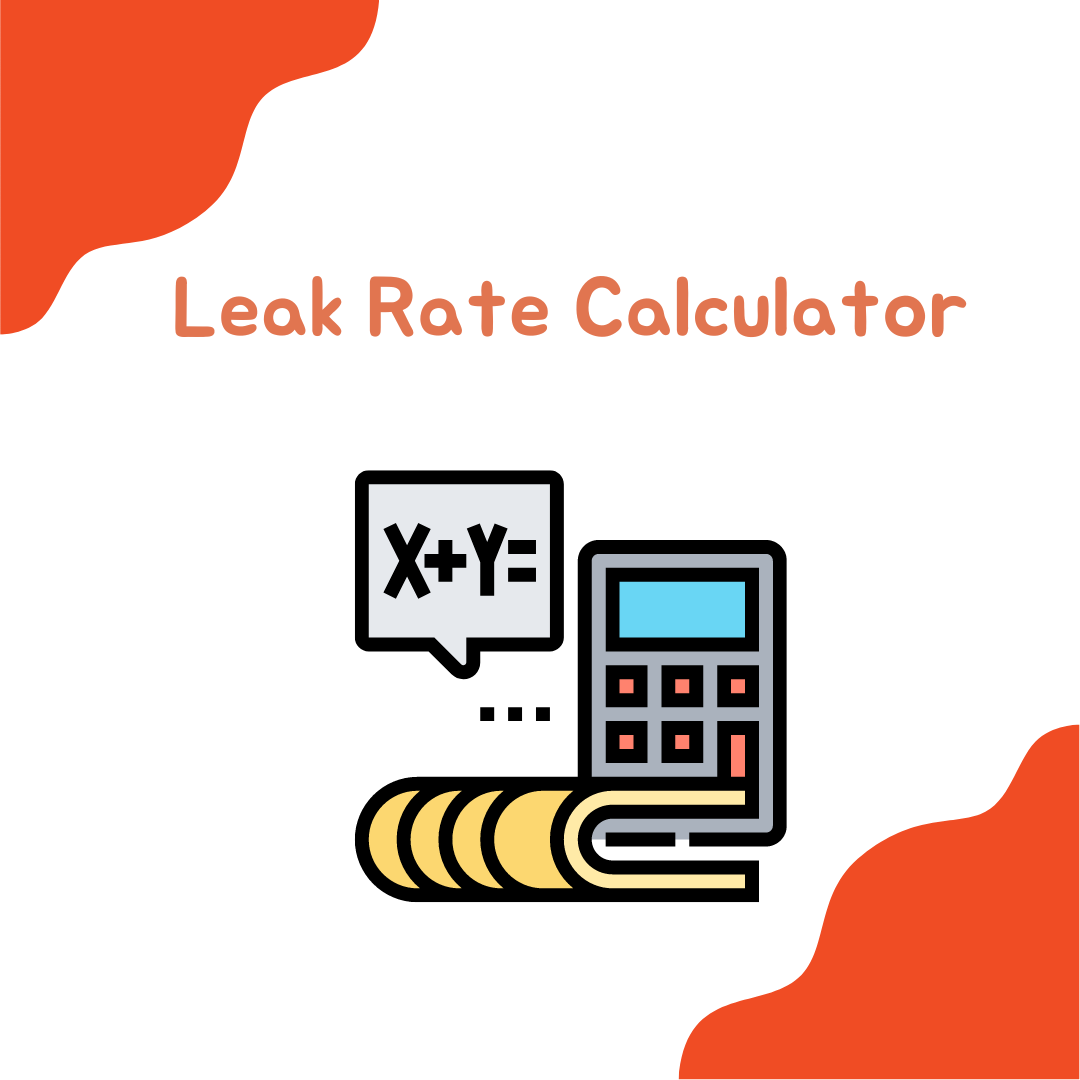Leak Rate Calculator
Leak Rate Calculator: Environmental Compliance
A Leak Rate Calculator is a helpful tool designed to estimate the rate at which a fluid or gas is leaking from a system or container. This calculator is commonly used in various industries such as manufacturing, automotive, aerospace, HVAC (heating, ventilation, and air conditioning), and many others where leak detection and control are essential for safety, efficiency, and environmental compliance.
Affiliate Link


Ideapad Newest 14 inch FHD Laptop Computer - 8GB RAM 256GB NVMe SSD Intel Core i3-1115G4
The exact budget friendly laptop I got my dad. It has been working well for him.

Potential impact on the System's Performance
The primary purpose of a Calculator is to assess the severity of a leak and its potential impact on the system’s performance. It helps engineers and technicians make informed decisions regarding maintenance, repairs, or replacements of components to ensure optimal system functionality and prevent any adverse consequences caused by leaks.
Formula for Calculating Leak Rate
The formula for calculating the leak rate through an orifice based on the Hagen-Poiseuille equation is as follows:
Leak Rate (Q) = (C * A * √(2 * ΔP * ρ) / √μ
Where:
- Q is the leak rate in units of volume per unit of time (e.g., scc/s, scfm, LPM).
- C is a discharge coefficient, which considers the shape and smoothness of the orifice. It is a dimensionless value typically between 0.6 and 0.8 for well-designed orifices.
- A is the cross-sectional area of the orifice through which the fluid or gas leaks, measured in square units (e.g., cm², in²).
- ΔP is the pressure differential across the orifice, represented as the absolute pressure inside the system (P_inside) minus the total pressure outside the system (P_outside).
- ρ is the fluid’s density, measured in mass per unit volume (e.g., kg/m³, lb/ft³).
- μ is the dynamic viscosity of the fluid, a measure of its resistance to flow, typically expressed in units like Pascal-seconds (Pa·s) or poise (P).
Please note that the units for each parameter in the formula should be consistent with the desired leak rate units. Additionally, the Hagen-Poiseuille equation assumes laminar flow, so it may not be accurate for situations with turbulent flow or complex geometries. More advanced models or experimental data may be necessary for precise leak rate calculations in such cases.
Key components Leak Flowrate
Leak Rate Equation:
The calculator is based on a mathematical formula that relates the leak rate to various factors such as the leak size, pressure differentials, temperature, and the type of fluid or gas involved. The most common equation used is based on the Hagen-Poiseuille equation, which describes fluid flow through a small hole or orifice.
Inputs and Parameters:
To use the Leak Calculator effectively, users need to provide specific inputs such as the pressure inside the system, the pressure outside the system (ambient pressure), temperature, and the characteristics of the fluid or gas being leaked. Other factors, like the size of the leak or orifice and the fluid’s properties, such as viscosity, density, and molecular weight, might also be required depending on the complexity of the calculation.
Leak Rate Units:
The leak rate is typically expressed in units like standard cubic centimeters per second (scc/s), standard cubic feet per minute (scfm), liters per minute (LPM), or other applicable units based on the specific requirements of the industry or application.
Accuracy and Assumptions:
The calculators are designed with certain assumptions, and their accuracy depends on the validity of these assumptions. For example, the calculator may assume that the leak is a small orifice with laminar flow and negligible changes in the fluid’s properties due to pressure and temperature fluctuations.
Application and Interpretation:
The results from the Calculator are valuable for assessing the potential impacts of a leak on a system. Engineers and maintenance personnel can use this information to determine if a leak requires immediate attention or can be monitored and scheduled for repair during planned maintenance activities.
Safety and Environmental Considerations
Leak rate calculations ensure safety and prevent harm to personnel, equipment, and the environment. Especially in industries dealing with hazardous substances, accurate leak rate assessments are crucial for preventing accidents and adhering to regulatory standards.
Provide Valuable Insights
It is important to note that while a Calculator can provide valuable insights, professional expertise, and practical judgment are necessary to evaluate the actual impact of a leak and make informed decisions regarding the best course of action for maintenance or repairs. Technological advancements and industry-specific requirements may also lead to variations in Calculator designs and functionalities.
